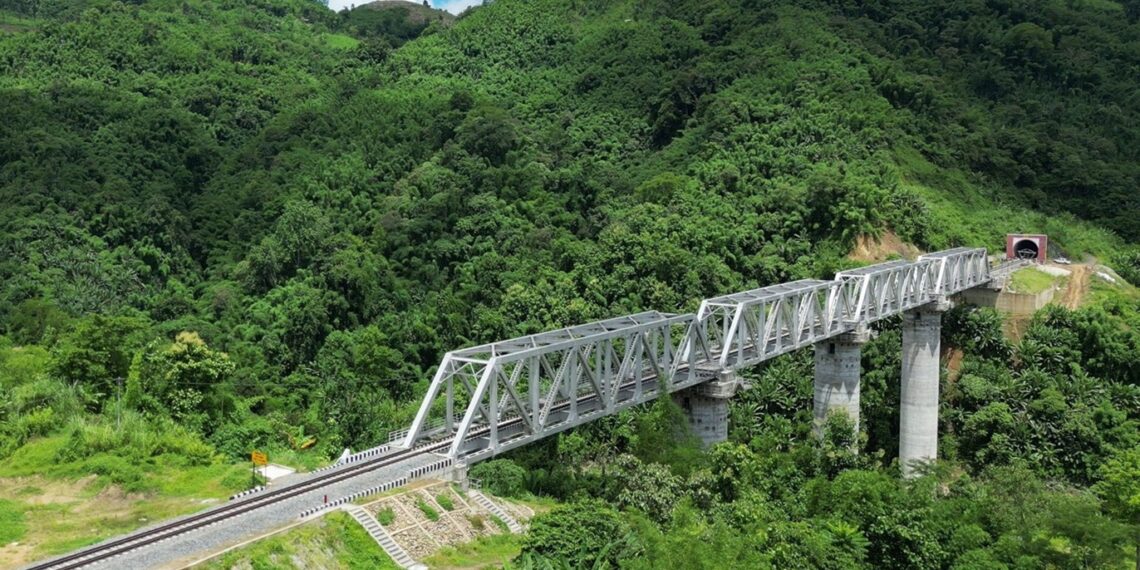Aizawl: Mizoram has finally entered the national railway map with the completion of the long-awaited Bairabi–Sairang railway line, a 26-year journey marked by extraordinary engineering challenges and logistical hurdles in one of India’s most remote terrains.
Originally envisioned in 1999, the 51.38-km broad gauge rail line connecting Bairabi to Sairang—just 20 km from the state capital Aizawl—was officially commissioned in June this year by the Commissioner of Railway Safety.
Prime Minister Narendra Modi is expected to inaugurate the project soon.
What began as an ambitious idea encountered early roadblocks, with dense forests, poor visibility, and rugged landscapes making standard surveys impossible.
Instead, engineers conducted a reconnaissance survey in 2006 after approval from the Railway Board.
Subsequently, RITES was engaged in 2008 to carry out pre-construction studies and geo-technical investigations, culminating in a detailed project report submitted in August 2011.
Given the line’s strategic significance, the UPA government declared it a “National Project” in 2008–09.
Construction began in earnest in 2015–16 after land acquisition was completed. The foundation stone had been laid by Prime Minister Modi in November 2014.
Chief Engineer Vinod Kumar described the unique difficulties in building the railway through Mizoram’s rugged terrain.
“Construction could only be carried out for four to five months a year, from November to March, due to the extended monsoon season,” he said.
The alignment runs through steep hills, deep gorges, and unstable slopes, necessitating complex engineering solutions including tall viaducts and tunnels.
Access to the site remained a constant struggle.
“Transporting materials through the region’s narrow, landslide-prone roads meant large trucks had to offload cargo onto smaller vehicles to reach construction points,” said a senior Northeast Frontier Railway (NFR) official.
Even cranes for bridge girder erection had to be dismantled and reassembled on-site.
The workforce also had to be brought in from outside Mizoram due to a lack of available local labour.
With many project locations cut off from mobile networks, labourers often hesitated to work in such isolated conditions.
ALSO READ: Sitharaman backs UNESCO bid for Meghalaya’s living root bridges
Additionally, key raw materials like stone chips and sand had to be transported from Assam, Meghalaya, and West Bengal.
Despite these challenges, the project stands as a remarkable feat of modern infrastructure. The railway line includes 48 tunnels (covering 12.85 km), 55 major bridges, 87 minor bridges, five road overbridges, and nine road underbridges.
Among its engineering highlights is Bridge No. 196, which rises 104 metres—making it 42 metres taller than Delhi’s Qutub Minar.















